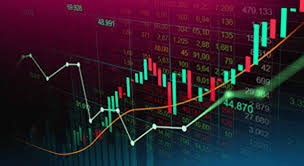The Importance of Forex Trading Servers in Today’s Market
In the fast-paced world of forex trading, the efficiency and reliability of trading servers play a pivotal role in the success of traders. The forex market operates 24 hours a day, five days a week, and traders require a seamless experience to execute their strategies effectively. This article delves into the key aspects of forex trading servers, their importance, and how they can enhance trading performance. Along the way, we’ll also mention resources like forex trading servers Latin America Trading that can aid traders in optimizing their trading experience.
What are Forex Trading Servers?
Forex trading servers are the underlying infrastructure that facilitates the execution of trades on the forex market. These servers are typically operated by brokerages and are responsible for handling trade requests, order execution, price streaming, and maintaining the security of transactions. In essence, they act as a bridge between the trader and the market.
Types of Forex Trading Servers
There are two primary types of forex trading servers: dedicated servers and virtual servers. Each type has its own pros and cons, making it essential for traders to choose the right solution based on their trading style and needs.
1. Dedicated Servers: These servers are physical machines that provide exclusive resources to a single user or organization. This results in high performance, low latency, and greater security. Dedicated servers are ideal for professional traders who require extensive computational power for complex trading algorithms and strategies.
2. Virtual Servers (VPS): Virtual Private Servers allow multiple clients to share the same physical server. While this can be cost-effective for traders, it may lead to latency issues or reduced performance during periods of high traffic. VPS is suitable for traders who engage in less intensive trading activities and don’t require high trading frequencies.

Importance of Low Latency
Latency refers to the time it takes for data to travel from one point to another. In forex trading, low latency is crucial because even the slightest delay can impact the price at which an order is executed. Traders, particularly those who engage in high-frequency trading (HFT), are constantly looking for low-latency environments to capitalize on minute price changes.
Moreover, trading servers that are geographically closer to major liquidity providers can significantly reduce latency. As a result, many traders consider colocation services, which involve placing trading servers in close proximity to exchanges to achieve the fastest possible execution times.
Security Considerations
Security is another vital aspect of forex trading servers. With the increasing prevalence of cyber threats, ensuring that your trading environment is secure is paramount. Reputable brokers will implement robust security measures, including the use of data encryption, firewalls, and regular security audits. For traders, this means that one must choose a broker with a strong cybersecurity reputation and solid server infrastructure.
Traders should also be vigilant about their personal security, employing two-factor authentication (2FA) and keeping personal data confidential.
The Role of Server Location
The location of the trading server can greatly affect a trader’s performance. As mentioned earlier, servers located nearer to key financial centers (like New York, London, or Tokyo) often experience lower latency, which can lead to better trade execution and responsiveness. Brokers often have multiple server locations to cater to their clients’ needs, allowing traders to choose the server that best suits their geographical location.
Choosing the Right Broker
When selecting a forex broker, one of the most essential criteria to consider is their server performance. Traders should evaluate:
- Server type (dedicated vs. VPS)
- Latency and speed of order execution
- Server locations and their relevance to trading strategies
- Security measures in place
- Support and customer service quality
By understanding these factors, traders can make informed decisions that align with their trading objectives.
Technological Advancements
The technological landscape of trading servers is constantly evolving. New advancements, such as the integration of artificial intelligence (AI) and machine learning into trading algorithms and server infrastructure, are changing the way traders operate. These technologies can enhance performance, optimize trade execution, and even provide predictive analytics to inform trading decisions.
Furthermore, cloud computing has revolutionized the way trading servers are managed. By utilizing cloud-based trading servers, brokers can offer flexible and scalable solutions that adapt to varying trader volumes and demands. This technology allows traders to have access to powerful server resources without the need for significant upfront investment.
Conclusion
The significance of forex trading servers in today’s trading landscape cannot be overstated. From ensuring seamless trade execution to maintaining robust security and accommodating technological advancements, these servers are at the heart of forex trading. As the market continues to grow and evolve, choosing the right trading server and broker will be essential for traders looking to succeed in the competitive forex environment.
Ultimately, the combination of low latency, strong security measures, strategic server locations, and an understanding of technological advancements will empower traders to make the most of their forex trading of which aids resources like Latin America Trading can provide valuable insights and tools.


